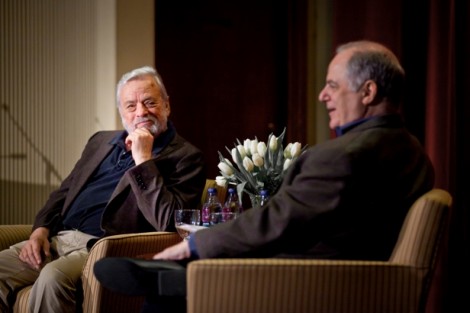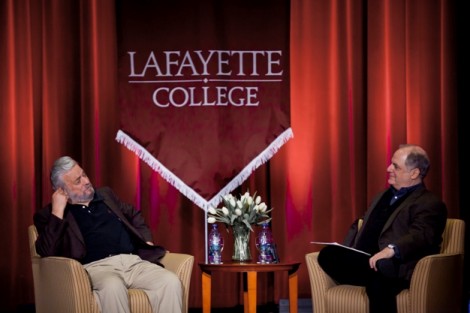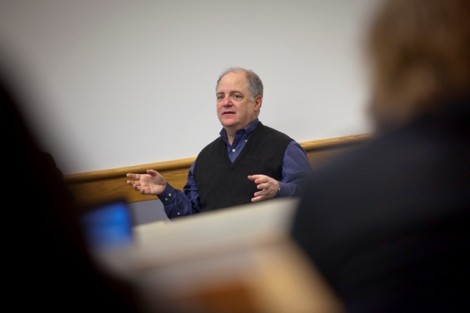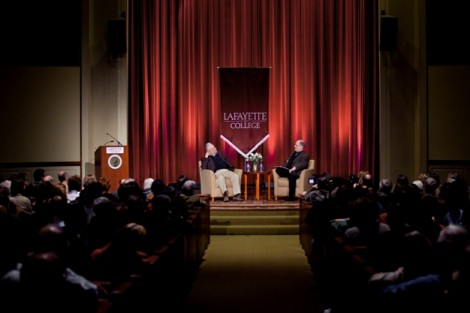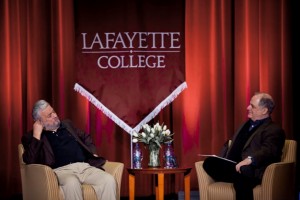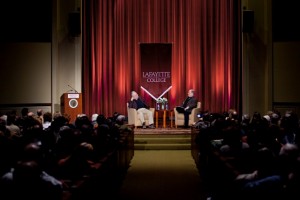Last night, Colton Chapel was filled to capacity. Legendary Broadway composer and lyricist Stephen Sondheim sat onstage casual and relaxed. Although 80 years old with a full head of white hair, he exuded a boyish charm that gave the feeling he was a favorite uncle entertaining everyone with tales of his adventures.
Across from him sat Frank Rich, who as a New York Times theater critic for 14 years had covered many of Sondheim’s musicals. During their live, unscripted conversation, Rich, now op-ed columnist for The New York Times, seemed to know just the questions to ask to provoke a thoughtful answer.
Sondheim’s comments were lively, to the point, and nearly always with a dash of wit wrapped together with insights about music, composing, and “yearning.” They discussed Sondheim’s 50-year career, his creative process, and his major works including A Funny Thing Happened on the Way to the Forum, Sweeney Todd, Sunday in the Park with George, Into the Woods, Follies, Company, West Side Story, and Gypsy. Earlier in the day, Sondheim and Rich also hosted a private workshop-style session with students and faculty.
In the 1950s, Sondheim worked with Leonard Bernstein over a period of two years on West Side Story. Bernstein wrote the musical score and Sondheim wrote the lyrics.
“We would work separately for a few days and then work together in Lenny’s studio,” he said.
Sondheim described the studio as being almost like a monk’s cell. It was the smallest room in Bernstein’s 12-room apartment and had only one window that looked out on an air chute. There was a piano and a bar and nothing else. Sondheim said it made him understand how those monks turned out beautiful manuscripts, because “there is nothing to distract you.”
Sondheim worked with many other big names during his career–Jerome Robbins, Oscar Hammerstein, Richard “Dick” Rodgers, Arthur Laurents, James Lapine, Hal Prince, and Tim Burton.
He stressed the importance of staying true to the story and writing songs for particular characters. He described the process for “Losing My Mind,” from Follies and “Being Alive” from Company.
“The characters are created by the librettist,” Sondheim said. “I write the songs for the characters in the story. When I write a song I get into that character’s feelings and what their role is in the story. It is not about me, the song is all about the character.”
Rich asked Sondheim what he had learned from his failures.
“The only reason to write is out of passion, out of love. That’s what failure taught me. …The more you write, the better you get until you are successful and then, you might get worse,” he laughed.
The event was part of the College’s Thomas Roy and Lura Forrest Jones Visiting Lecture Series. Founded by Trustee Emeritus Thomas Roy Jones in 1973, the series provides Lafayette students with the opportunity to hear presentations and interact each year with individuals of exemplary accomplishment in the academic world or in public life.
Read more about Sondheim and Rich.
